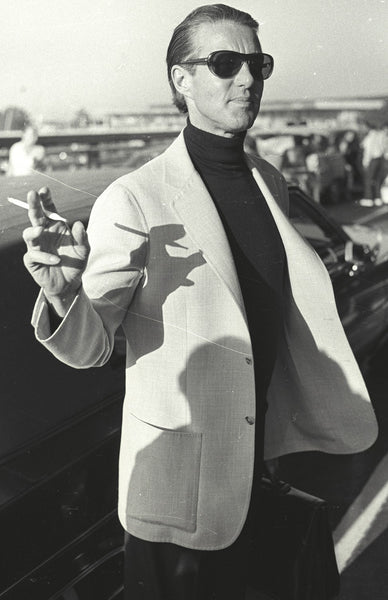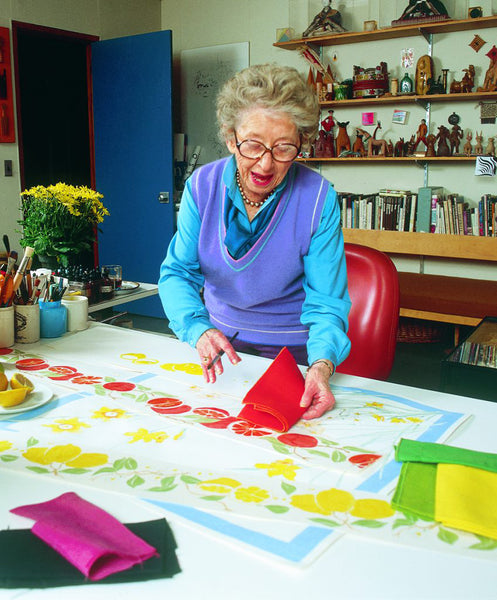Designer Spotlight: Madame Gres
April 26, 2019

Born in Paris, around the turn of the 20th century, Madame Grès (nee Germaine Émilie Krebs, AKA Alix Barton, Alix) pursued sculpture before turning her interests towards fashion. Grès was initially a hat maker, but her eye for design soon propelled her into haute couture dressmaking. By the 1930s, Grès had made a name for herself and by the end of her career she counted a number of famous women in her client list, including: Wallis Simpson - the Duchess of Windsor, Princess Matilda of Greece, Paloma Picasso, Grace Kelly, Marella Agnelli, Marie-Helene de Rothschild, Edith Piaf, Jacqueline Kennedy, Dolores del Río, Barbra Streisand, Marlene Dietrich, and Greta Garbo.
During the German occupation of France in World War II, Madame Grès was ordered to design stark, utilitarian clothing, but defied the occupation government and continued to design sumptuous dresses in the red, white and blue of the French tricolor flag. Bewilderingly, despite being Jewish, German officers were said to have asked Grès to design dresses for their wives. Grès bravely refused. Both her refusal to design for the wives of occupying officers, and her refusal to design drab garments, played a part in the forced closing of her design house; her plenteous use of fabric during wartime was the excuse given.
After the war Grès began to design her famous Grecian goddess gowns; her quick return to fashion was a mark of perseverance, bravery, and success. Our own black and red Grecian pleat gown features two stitched-in Stars of David on the waist of the dress' lining. Although her earlier work reflected the sculptural, Grecian motifs that she exhibited in her later work, she truly came into her own by designing the Grecian goddess gowns. Like her earlier work, the Grecian goddess gowns championed simplicity and the liberty of movement, and were designed with the wearer in mind: the body was to shape and mold the dress, not the other way around.
Grès experimented with form, function, movement, and structure, creating billowing pleats and narrow pinches that would steer the direction of her designs. Grès' career stretched across several decades, with her designs remaining timeless and her craftsmanship unparalleled.
Also in Adore MRS. Couture

April 19, 2019
Halston was thrown into the limelight when Jacqueline Kennedy wore his pillbox hat to John F. Kennedy’s inauguration. Soon Halston expanded into women’s wear, creating both couture and ready-to-wear fashion catering to the fashionable and elite jet set. Halston also accepted the honor of designing the 1976 US Olympic team uniforms, redesigned Braniff Airlines’ uniforms in 1977, and created uniforms for the New York Police Department and the Girl Scouts in 1978.
Halston was innovative, using slinky knit material and ultrasuedes, and introducing a halter dress design that elongated a wearer’s silhouette. He pioneered the sensual and soft draped looks associated with disco and his beloved Studio 54.
Continue Reading

April 12, 2019
Lawrence Vrba began his career in 1969, working as a counter at Miriam Haskell; his talents did not go unnoticed, and he soon found himself designing jewelry. The Egyptian collection - perhaps his most famous Miriam Haskell collection- was inspired by materials he found while in Europe, and was featured in an edition of Vogue. In 1983 Vrba left Les Bernard to create his own eponymous business.
Continue Reading

April 05, 2019
In the 1940s material rationing caused linen to be in short supply; Vera found some parachute silk in a surplus store while looking for alternatives. This event was the catalyst for Vera’s scarf business. The scarves became instantly popular; Vera designs were taken from her paintings; Vera, keeping her signature on the scarves, created the concept of a signature scarf. An entrepreneurial woman, Vera championed branding, her little ladybugs were displayed on her pieces. Vera cross marketed her art, using the same print in garments, table fashion, bedsheets, kitchen accessories, aprons, towels, and more.
Continue Reading




